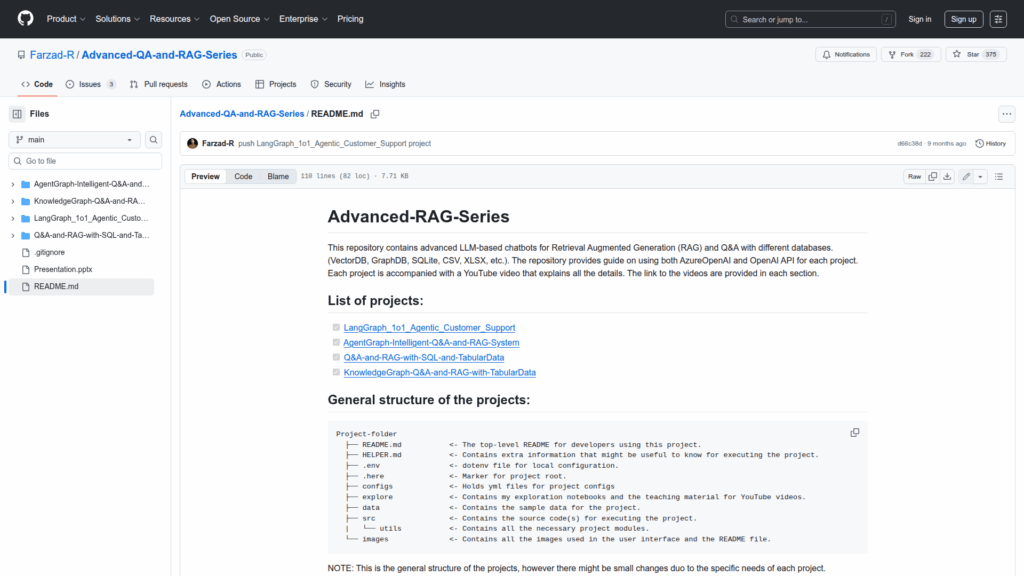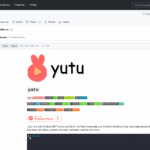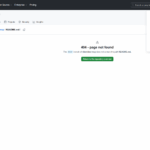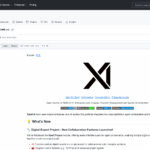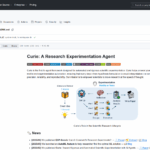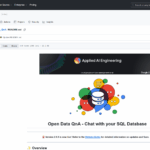Advanced-QA-and-RAG-Series
Basic Information
This repository is a collection of advanced LLM-based chatbot projects focused on Retrieval Augmented Generation (RAG) and question-and-answer interactions over a variety of data stores. It demonstrates working examples that connect LLMs to VectorDBs, GraphDBs, SQLite, CSV and XLSX files and shows how to use both AzureOpenAI and OpenAI APIs in each project. The series contains multiple standalone projects including an agentic customer support system, an agentic Q&A and RAG system, a SQL and tabular-data Q&A project, and a knowledge-graph-based Q&A project. Each project follows a consistent folder structure with README and HELPER files, configuration yml files, source modules, sample data and exploration notebooks. Many projects are accompanied by step-by-step video walkthroughs intended to teach practitioners how to assemble, run and adapt agentic RAG systems.

